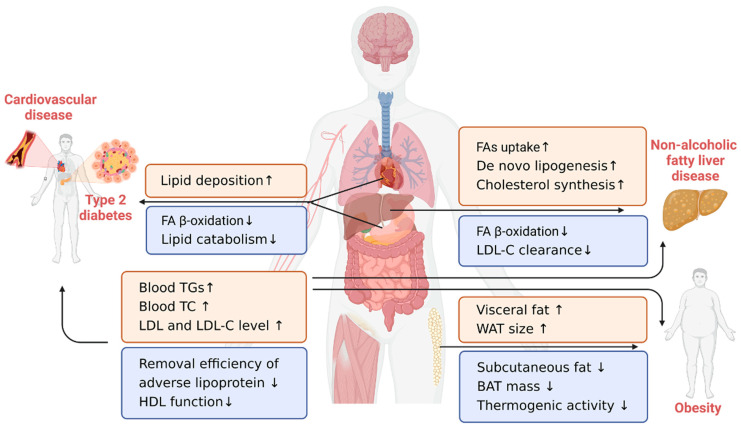Figure 2.
Key metabolic mechanisms of lipid dysregulation in the elderly and their associated chronic diseases. The body’s lipid homeostasis is maintained through a combination of hepatic anabolism and catabolism, adipose tissue storage, peripheral tissue utilization, and subsequent balance in blood circulation. These endogenous lipid metabolic changes in the elderly include increased lipid production and accumulation (corresponding to the red box) and decreased lipid consumption and clearance (corresponding to the blue box), which result in age-related chronic diseases such as cardiovascular disease, type 2 diabetes, nonalcoholic fatty liver disease, and obesity. ↑ means studies showing a significant increase; ↓ means studies showing a significant decrease; FA—fatty acid; TG—triglyceride; TC—total cholesterol; LDL—low-density lipoprotein; LDL-C—low-density lipoprotein cholesterol; HDL—high-density lipoprotein; WAT—white adipose tissue; BAT—brown adipose tissue. Figure 2 was created using Biorender with permission for publication from Biorender.com (accessed on 9 July 2023).

